Android Wear Review
Android Wear
First look: Android Wear 2.0 is here and we take a look
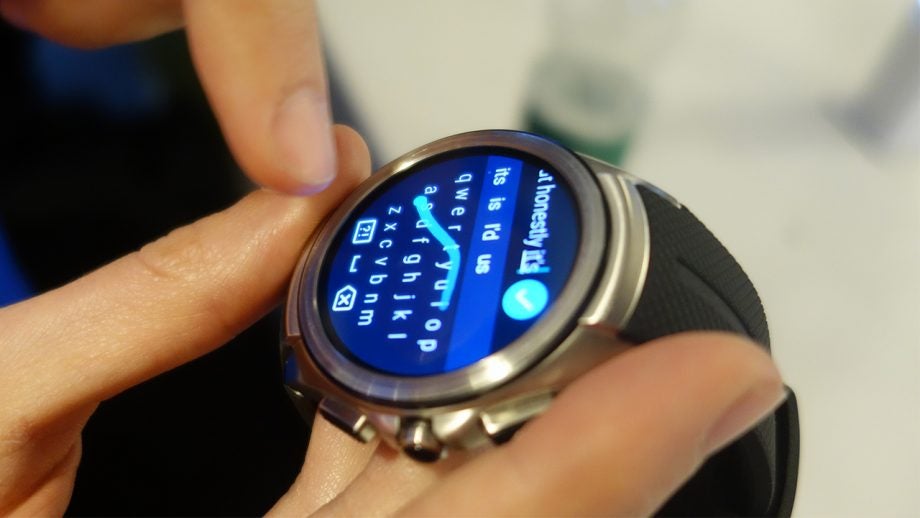
Verdict
Pros
- Clean, good-looking user interface
- Google Now notifications are useful
- Accurate voice recognition
Cons
- Settings and apps are too hidden away
- Small selection of Android Wear apps
- Google Maps navigation is very temperamental
Key Specifications
- Google Now; Google Voice Search; Android Wear apps in Google Play Store; Navigation; Music Control; Google Fit
Early hands-on with Android Wear 2.0 – The “biggest update yet” to the wearable operating system
In brief:
- Android Wear 2.0 release date: Autumn 2016
- Android Wear 2.0 beta: Available now
If there’s one piece of Google’s software family that was in need of some serious love at I/O it was Android Wear. The wearable operating system had seen sparse new features added since its introduction, but that now looks set to change.
Android Wear 2.0 is the system’s biggest update to date, but I’m still not entirely convinced that it will bring the changes that are so desperately needed.
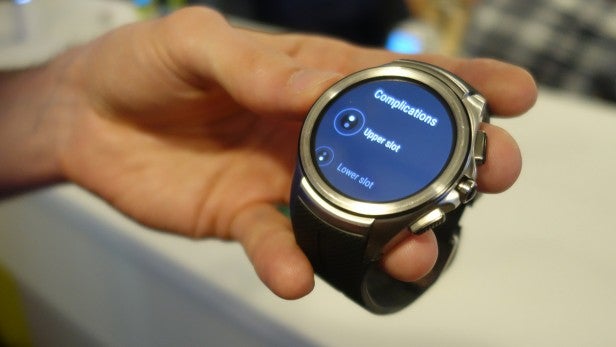 Complications and standalone apps are big updates
Complications and standalone apps are big updates
Easily the most exciting feature coming with version 2.0 is standalone apps. Previously, Android Wear apps were simply extensions of their phone counterparts, which made them slow and limited. Now, they’ll run on the watch alone, with no need for a constant connection to your phone. For example, a Spotify app could let you download music directly to the watch, with no input from your Nexus 6P at all.
In addition, LTE/4G data-connected watches – the LG Watch Urbane 2nd Edition, for instance – will be able to get online and use these apps even when there isn’t Wi-Fi available.
I didn’t get the opportunity to see these apps at work, but Apple made a similar move with its second version of watchOS and it did manage to speed everything up no end. I’m still not sold on the fact that we actually need apps on our watches, but if they’re there then at least they won’t be an absolute pain to use.
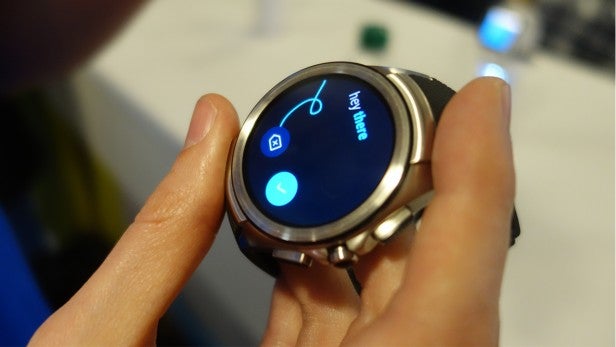 Handwriting recognition has been improved
Handwriting recognition has been improved
Another feature seemingly plucked straight from watchOS 2 is third-party complications. These handy tidbits sit on the watch face and provide quick access to certain functionality – pausing your music or starting a workout, for example. In some ways these prove more useful than fully blown apps since you don’t have to navigate the system to open an app; it just sits there.
Google Fit has seen a much-needed update, too, and it will now automatically track your workouts without you having to do a thing. I’m a fan of this feature on dedicated fitness bands such as the Fitbit Alta, and it’s nice to see it coming to Android Wear.
Apps will also be able to use the Google Fit framework, so the Strava app could bring in details from your Google Fit profile and vice-versa. Android Wear watches that come with GPS are also able to use it without being tethered to a phone, again helping it become an all-round fitness device.
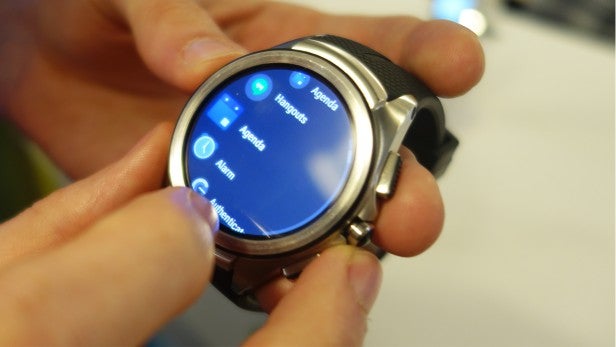 First look at the updated launcher
First look at the updated launcher
Many of the other changes are visual. The app menu is now akin to a rotary grid as opposed to a list, and the overall colour scheme is much darker; greens and blacks are certainly easier on the eyes. It’s far simpler to switch watch-faces too – wait, was this difficult before? – since it now requires just a swipe across instead of having to press down first.
Although the visual changes are nice, I didn’t really have a huge problem with what was there before, and as such they haven’t instilled new excitement about the future of Android Wear.
What I’m most annoyed about, however, is that with Android Wear 2.0 Google has added a teeny-weeny keyboard for replying to messages. My heart dropped a little when I was demoed this, simply because I don’t want a keyboard on my watch.
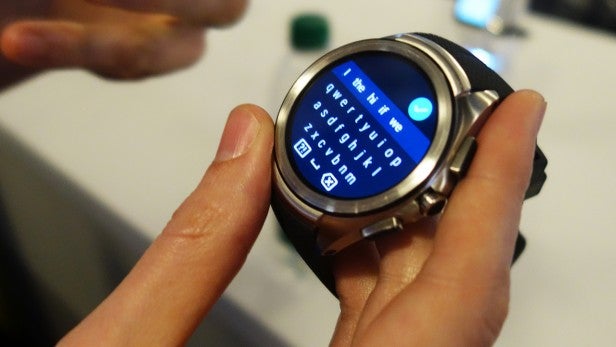 The tiny keyboard
The tiny keyboard
It instantly makes everything more complicated; app developers will no-doubt build it into apps and my interest in smartwatches will begin to decline.
I guess I’ll have to save my final judgement until I’ve used it more thoroughly, but the chap demoing it to me made numerous typos in a short space of time. Handwriting recognition is included, too, which makes a tad more sense.
Android Wear 2.0: First Impressions
Having worn an Android Wear watch on and off since it was first released, I’ve discovered numerous issues.
Some of these seem to have been addressed with version 2.0 – notably, not having to always be tied to a phone, and smarter watchfaces. However, I’d have rather Google focused on making the OS simpler to use and providing the right sort of information than adding in a keyboard and rejigging the UI.
While it wasn’t confirmed, a Google rep said it was trying to bring Android Wear 2.0 to as many previous devices as possible, and we’ll know more about compatibility in the run up to release later in the year. There’s an early version available now, but it will only work with the Huawei Watch and LG Watch Urbane 2nd Edition.
For our initial Android Wear 1.0 review, see below
What is Android Wear?
Android Wear is Google’s operating system optimised for wearable tech and, specifically, smaller screens such as the ones you find on smartwatches.
Inspired by features already present in the smartphone and tablet-friendly version of Android, Google is pinning its hopes on Android Wear being the key to giving smartwatches real appeal.
The LG G Watch and the Samsung Gear Live are the first Android Wear watches to go on sale, with the Moto 360 to follow later in the year; Asus, too, is among the companies rumoured to be jumping on the Android Wear bandwagon.
We’ve spent a good deal of time with the operating system for our LG G Watch review and our first few days getting to know the Samsung Gear Live (review coming soon) and the core of Android Wear definitely impresses, but it’s still a little rough around the edges.
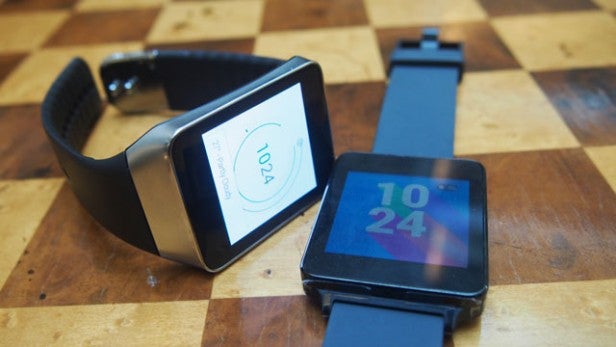
Android Wear: How does it work?
Android Wear is all about turning the likes of the G Watch and Gear Live into companion devices for your smartphone. It’s never going to replace your Samsung Galaxy S5 or Moto G but it does hope to give you the information you need in a discreet way and provide some of the same functionality without you having to reach into your pocket every time.
It’s worth pointing out that Android Wear is not compatible with iPhones or Windows Phones and will only work with Android phones running on Android 4.3 JellyBean upwards. That does mean it covers a broader range of handsets than Samsung’s Tizen-based smartwatches, although those with Android phones running an earlier version of the operating system have cause to grumble. In contrast, Pebble smartwatches currently play nice with both Android phones and iPhones.
Connecting the smartphone to smartwatch is done over Bluetooth 4.0 Low Energy so when you are out of range of your phone or signal drops, you are left with very limited functionality. You won’t be able to see the Google Now cards or notifications, but you can use basic smartwatch features like the stopwatch.
You need to download the Android Wear application to your phone to establish the connection between the two devices. It’s also the place to customize settings for notifications and browse compatible apps. Apps are built into the Google Play Store but as far as we can see they are only searchable via the Android Wear app.
Downloading apps is done through the phone and should then appear on the smartwatch although that’s not always the case. Re-syncing apps to the smartwatch (which is done via the Android Wear app) usually does the trick but we struggled to get apps to appear on the Gear Live. We actually had to hard reset the watch to refresh the installed apps. This is one of the few teething problems in an otherwise hassle-free setup.
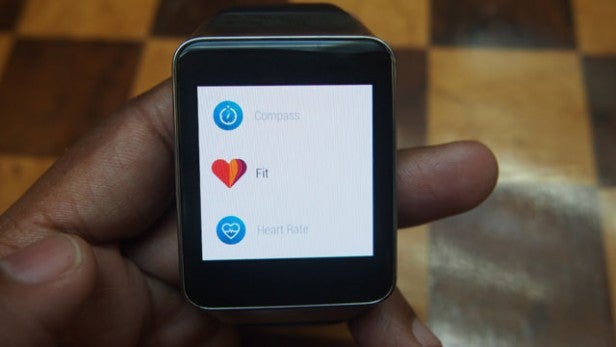
Android Wear: Design and Interface
While manufacturers can put their own spin on the hardware, Google has kept control over the look of Android Wear. There’s not the free-for-all you find with different manufacturers’ versions of Android. Google wants Android Wear to be consistent.
It’s a look that’s largely inspired by Google Now, the intelligent digital assistant that’s accessed on Android smartphones usually by swiping left on the homescreens or doing the same action up from the home button. The same clean, predominantly white UI has been adopted for Android Wear scaling down the size of the information cards to better suit the smaller screen.
Google Now always felt like a great fit for a smartwatch and when you finally see it in action it’s easy to see why. It’s simplistic and anything more complex simply would never have worked.
One of the areas the likes of Samsung and LG do have some control over is your choice of watch faces and both offer a way to customize the always on display. No doubt the Google Play store will soon be well stocked with watch faces, and Google has since confirmed that a custom watch face API is on the way. For now, the G Watch and Gear Live does give you some options to get started. LG currently offers a better selection to choose from but both could benefit with some bolder, more visible options.
While Android for tablets and smartphones might not be as easy to use as iOS, it’s going in the right direction. Disappointingly we can’t say that Android Wear provides an intuitive user experience just yet. For starters, you have to live without a notification drop down to quickly access settings or launch apps from homescreens. These options are hidden away at the bottom of Google Voice Search and if you don’t want to search for them by voice, it can make navigating to find them a fidgety process. It breaks the flow of an otherwise slick operating system and hopefully this will be addressed in later versions of Android Wear.
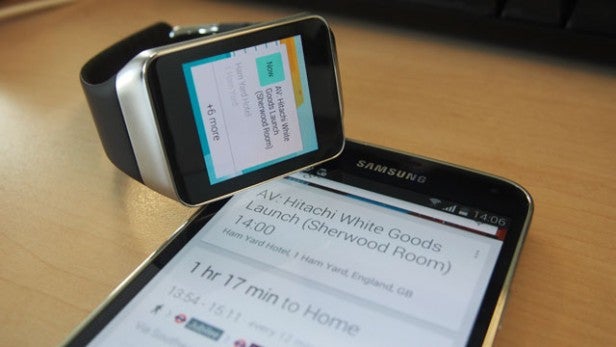
Android Wear: Google Now
Google Now is one of the key components of how Android Wear works. It uses location and search data to deliver information that you’ll find useful for that precise moment. That could be plotting your journey home, recommending places nearby to eat or finding out the latest football scores. Google continues to add greater functionality including features like parking detection and creating product reminders when you walk past a shop. This should in theory all filter down to Android Wear smartwatches.
At the moment it doesn’t feel like the full Google Now experience. Weather updates have a permanent spot on Android Wear while travel updates take some time to adjust to accurately pin point your commute. Calendar appointments come through at the beginning of the day so you can get a good idea of what you have planned and we even got regular updates on the cricket although they are presented as football scores for some odd reason.
There were some cards we had selected in Google Now that didn’t make an appearance like the links to news stories based on recent search history or the places nearby cards. Google Now clearly still needs to take time to learn about the information you really want or need but from what we’ve seen so far it’s the most interesting feature we’ve found, not just in Android Wear, but across all smartwatches.
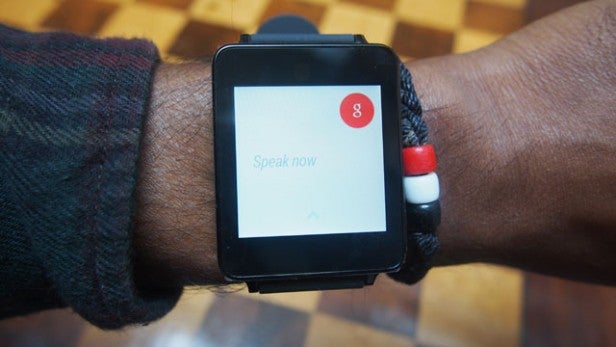
Android Wear: Google Voice Search
It doesn’t take very long to realise that Google’s Voice Search is a major part of how you interact with Android Wear smartwatches. That’s right. Prepare to go through the awkwardness of speaking to your wrist and asking it if you have any meetings tomorrow or to launch Google Play Music.
In the case of the LG G Watch there’s no buttons and the Samsung Gear Live has a single button to turn the watch on and off. You don’t have a keyboard although as ridiculous as it sounds, app developers are making them. You’ll need to speak to your watch to make notes, dictate emails and text messages.
To activate it on the G Watch and Samsung Gear Live you can double tap on the screen or simply say ‘OK Google’. Then you’ll be presented with examples of commands you can ask your phone about.
It works in the same way as Google Voice Search does on your phone so you are free to ask pretty much anything you’d normally go to Google for. Whether that’s something trivial or looking for an address, Android Wear can handle it.
One of the most interesting uses is navigation and the ability for Android Wear to guide you to a destination. This could be great for cyclists for instance who can’t reach into their pocket or someone who is simply lost and doesn’t want to walk around with their phone constantly in their hand. Disappointingly, it doesn’t really work. Relying on your phone’s GPS it takes an age to calculate routes and will inevitably force you to go back to your smartphone and use Google Maps in the conventional way. Pebble’s OS works a lot better in this respect.
The Gear Live and LG G Watch have different microphone placements, but voice recognition is generally accurate across both. As awkward as we feel talking to our tech in public, this is one part of Android Wear that works really well.
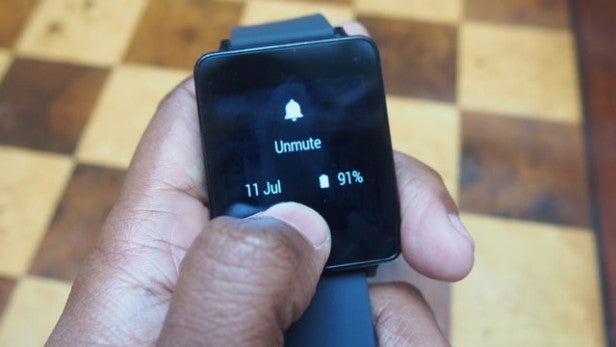
Android Wear: Gesture controls
There’s no pinch, zoom or multi-touch to worry about, but when you are not talking to your Android Wear smartwatch there’s a few gestures you need to get accustomed to help nevigate your way around. These gestures will work across Android Wear smartwatches so once you know it, you are good to go on any Wear device.
The first one to learn is swiping down on the clock face to view the date, battery status and mute or unmute notifications. You can swipe down to scroll through screens which entirely depends on how many notifications or alerts have come through. Swiping right on the screen will dismiss alerts or swiping left will give you the options to act on the notification.
Considering the size of the screen, keeping these gestures down to a minimum makes sense although it currently lacks an easy way to jump back to the main watch screen, which would be a useful addition.
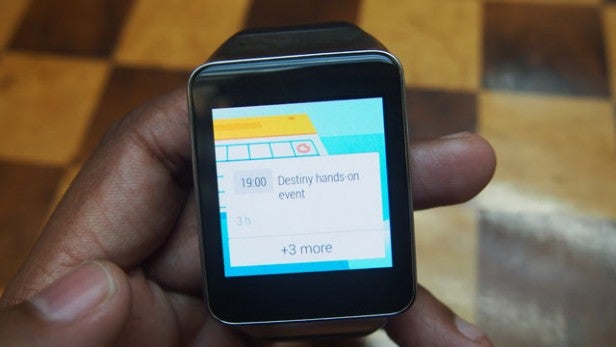
Android Wear: Notifications
The idea of receiving notifications has formed a fundamental part of what the first generation of smartwatches like the Pebble and the Samsung Gear are able to do. In Android Wear there’s what Google calls Bridged and Contextual notifications. Bridged notifications are the type you find popping up in the drop-down notification bar on your phone and the contextual notifications relate to Google Now updates. You can also see stacked notifications, like the one in the picture above, which can show multiple notifications from one application.
Android Wear won’t let you make calls and rightfully so as the very idea of having a full blown conversation on a watch is just ridiculous. You can see when calls and messages are coming through and can deal with these notifications on the smartwatch. It does mean using voice search to do it, but it is possible. What you can do with the notification entirely depends on the nature of it as well.
In most instances you’ll have to swipe right for the option to send it to phone but for emails and messages which can be expanded and read on the watch it’s a feature well suited to Android Wear watches. One issue you will encounter is that it’s all too easily to accidently swipe away a notification you haven’t had time to read. It’s a similar scenario when you accidently send an unfinished dictated message. Google needs some form of stop gap like flashing up a message that says, ‘Are you sure?’ to prevent this.
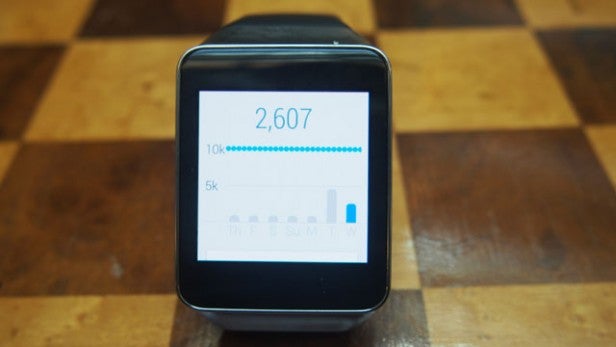
Android Wear: Google Fit
Just as Apple launched its HealthKit platform paving the way for its own assault on the fitness wearables market, Google announced Google Fit. The concept, much like HealthKit, is to unify all the tracking information from multiple fitness data, whether that’s running, cycling or anything else sporty and ultimately remove the need to own a separate dedicated activity tracker.
At the moment Fit is very basic and much of that has to do with the lack of fitness or health apps currently available for Android Wear. Both the LG G Watch and the Samsung Gear Live have the motion sensor technology to be able to track steps while the Samsung additionally includes a heart rate monitor. All of that data is stored and can be viewed in the Fit application.
The idea of bringing all of this data into one place and not having to worry about using different apps to track different things is a great idea. However, at the moment it’s far too primitive of a feature to know if Google’s approach works.
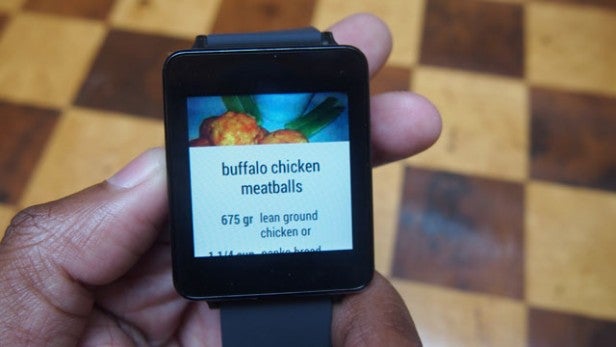
Android Wear: Apps
Bottom line, there’s not a lot of Android Wear apps. When you consider that Pebble smartwatch apps number in the thousands, Google has some catching up to do. We’ve gone into more detail about what we made of the quality of apps in our LG G Watch review and while it’s a mix bag there’s good variety of high profile Android apps. Tinder, Runtastic, Philips Hue Control, Golfshot Golf GPS, Google Keep, Duolingo, The Guardian, American Airlines and Google Hangouts are among the first batch to get the Android Wear treatment.
Getting app developers on board is going to be crucial to make Google’s vision for Android Wear work. Similarly creating the right type of functionality in those apps that make sense on a smartwatch is going to be vital to the success of the operating system.
Verdict
It’s abundantly clear that although Android Wear is polished in some areas, it still needs refining. The interface looks great but it needs to become intuitive and easier to use straight out of the box. The lack of apps is a problem too, and leaves many of the key Android Wear features largely untapped.
We’ve seen enough to suggest Android Wear provides the most compelling case that smartwatches could have a place in our day-to-day lives. Google Now’s bite-size information really impresses and can only get better. As much as we hate having to use voice search, which is by and large how you interact with Android Wear, it is at least accurate and gives you what you need.
Much will rest on Google staying committed to helping Android Wear evolve, just like it has done with the standard version of Android. It’s not just about Google though. Hardware manufacturers need to give the operating system an attractive place to live and ensure it has the power and more importantly the battery life to give it the best chance of success.
Pebble’s OS remains the most established platform but Android Wear has all the ingredients to build the smartwatch we will really want to own.


